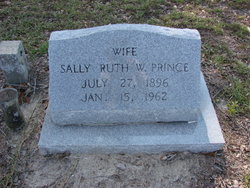

- Ada read filr backwards how to#
- Ada read filr backwards movie#
- Ada read filr backwards professional#
This was also the first legislation to prohibit discrimination against people with disabilities. Pioneer legislation paving the way towards the ADA came in 1973 when the Rehabilitation Act was passed encouraging the federal government and its contractors to hire people with disabilities. In 1974, I had my own “Independence Walk” at the age of eight, as chronicled in my award-winning post about walking to my bus stop using my mobility cane.

This set of laws guaranteed children with disabilities a “free appropriate public education” in an inclusive setting (that is, placement with nondisabled peers). In 1970, Congress declared the need for accessible public transportation, and 1975 marked the passage of the Education for All Handicapped Children Act, better known today by its amended name, IDEA ( Individuals with Disabilities Education Act). By this point, a powerful idea of a disability civil rights minority movement existed that had recently emerged from the struggles of African Americans and women. This decade of civil rights also witnessed the shift toward deinstitutionalization and thus, towards greater social integration of those who a few decades earlier could have been sterilized or even banned by “ugly laws” from appearing in public (which by the way were on the books in Columbus, Ohio, until 1973.) Medicare and Medicaid were established and these, along with greater financial support, allowed greater independence for many Americans.
Ada read filr backwards professional#
The 1960s and 1970sĭuring the 1960s, professional building standards allowing for greater access were discussed and implemented by degrees. Federal funding for the National Theater of the Deaf came a few years later. We see this in the 1949 establishment of a wheelchair basketball team and the 1960 pioneering of the Paralympic Games in Rome.

Ada read filr backwards movie#
Its campaigns emphasized the competence of people with disabilities and used movie trailers, billboards, and radio ads to convince the public that it’s “good business to hire the handicapped.” Two years later, a forerunner to the Ohio Governor’s Council on People with Disabilities was established, initially promoting the needs of wounded veterans.Īlong with huge steps in the job rehabilitation field, the disability community began to show itself more publicly, including having fun. By 1946, the first meeting of the “President’s Committee on National Employ the Physically Handicapped Week” was held in Washington, D.C.
Ada read filr backwards how to#
Whenever faced with an influx of wounded war veterans, American society asks itself how to accommodate their needs, and the World War II era was no exception.

By 1935, Ohio Bureau of Vocational Rehabilitation (BVR) offices were open in Columbus, Cleveland, Cincinnati, and Canton. Davis’ proclamation made official Ohio’s vocational rehabilitation partnership with the federal government. Just six weeks after President Woodrow Wilson’s 1920 lead, Ohio’s Governor Harry L. Until the 20th century, society had seldom questioned physical and social factors enshrouding all aspects of life with a disability. Encouraging those who could to integrate and find a vocation was controversial and new. Until then, disability was generally viewed as a thing to be cured, pitied, or hidden, and society took either a medical fix-it approach or a charitable do-it-for-them stance. This last event is especially revolutionary. Later that decade, the Commission for the Blind (the forerunner of BSVI), established its first industrial training schools and workshops. In 1900, Ohio also became the first state to provide aid to local schools for the education of children with severe disabilities. This and the School for the Deaf (1832) stand among the first public schools for these students in our country. For example, in 1837, Ohio’s legislature became the first in America to authorize funding for the Ohio Institution for the Education of the Blind. As a resident of Ohio, let me brag about my state because Ohio can boast a rich role in the ADA experience. As a landmark date, this holds true, but many events occurred far before the ADA, winds of change which swept the way for 1990. Many Americans today consider July 26, 1990, to be the birth date of the Americans with Disabilities Act (ADA). Sammons, Opportunities for Ohioans with Disabilities Program Administrator and VisionAware Peer Advisor Making Way for the ADA The Americans with Disabilities Act in Context: Looking Backward and Forwardīy Elizabeth L.


 0 kommentar(er)
0 kommentar(er)
